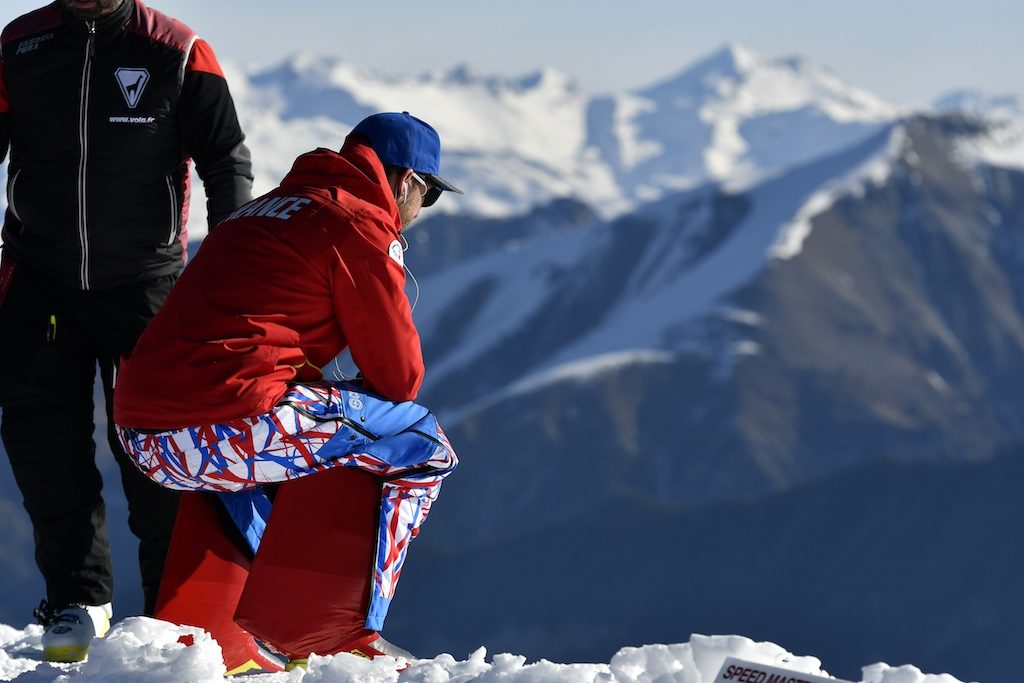Bastien Montès has good reason to smile. On 2nd April the French speed skier clocked 233.161 km/h (144.88mph) – the fastest anybody has skied this season – to win his second Speed Masters tournament in a row here in Vars.
Throw in the 3rd place overall finish in this year’s World Cup, add last year’s World Championship title, and you have the makings of an athlete relatively content with his current status on the mountain. Doubtless, he might have smiled a bit harder had he snagged the World Cup title, but for Bastien the focus lies primarily elsewhere: on breaking records. On edging past that elusive 254.958 km/h (158.424 mph) set by Ivan Origone here in 2016. All speed skiing is fast, but if you’re going to go faster, if you’re going to go fastest, the Speed Masters tournament in Vars is the only place to do it.
“Speed Masters are always a moment apart,” Bastien says when I ask him how he feels about this prestigious contest. “This is the world’s most impressive track, the fastest in the world. Only the ten best skiers in the world are qualified – it’s the grail in our discipline.”
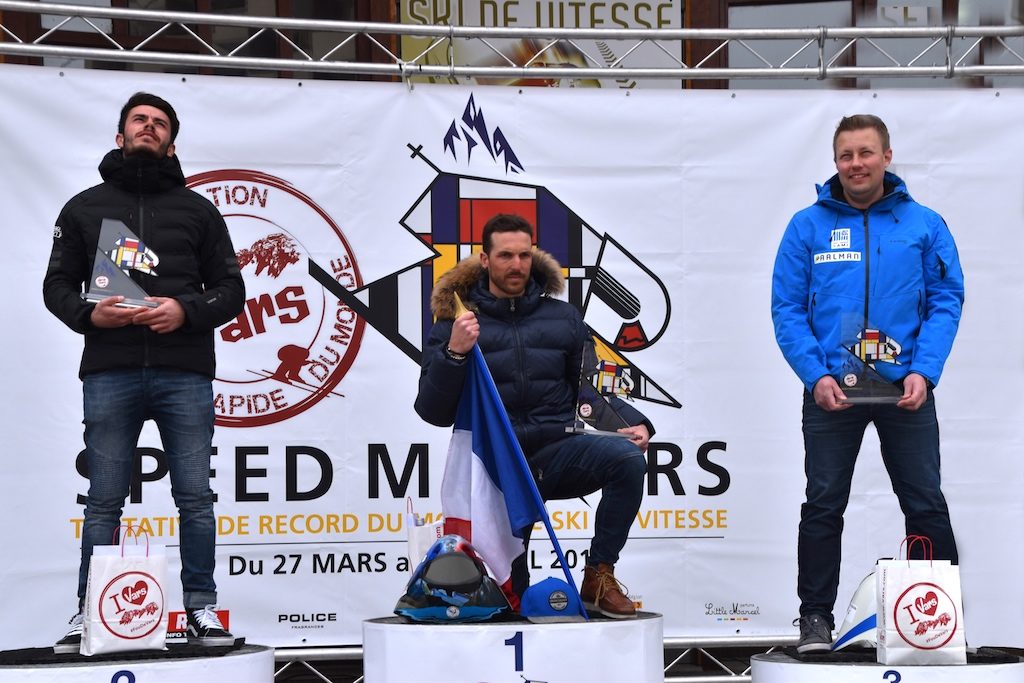
It’s certainly the grail in Bastien’s, because for the past two years Speed Masters is an event he has ruled.
“Last year I had already won this competition, a first for me, just after winning the World Championship – at the return of one year and a half without skiing, following a rupture of the ACL. It was a dream come true,” he adds. “251 km/h, what a feat!”
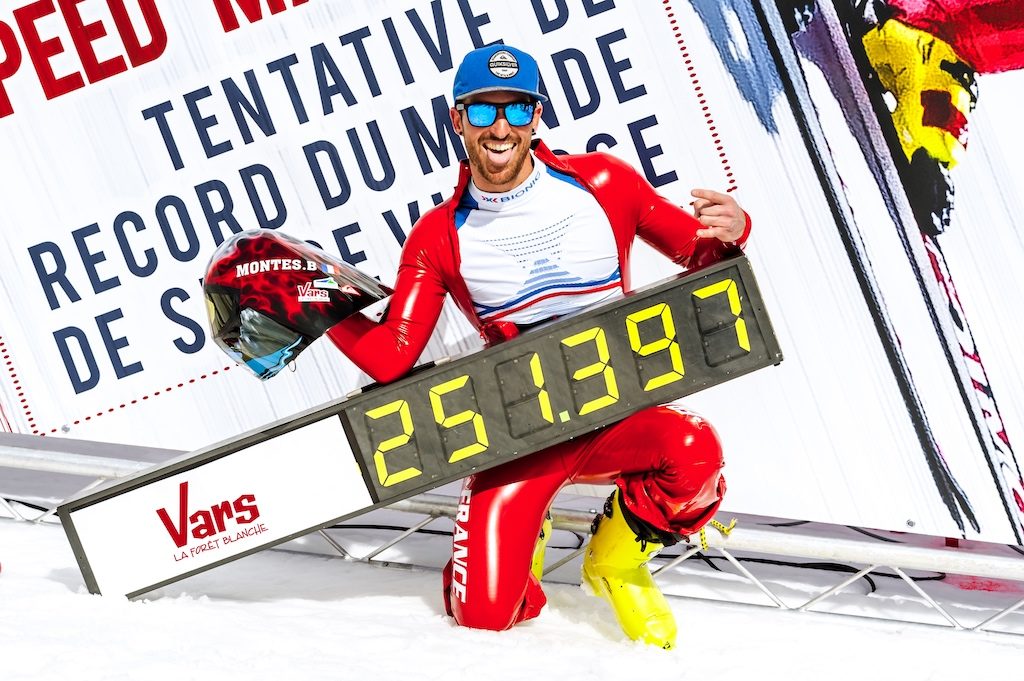
An impressive feat at that, but also a sensation Bastien was keen to repeat this year, even at the expense of the season as a whole.
“This year I decided to focus only on the SM, to be 200% on the day, to try to get a world record, even to set aside for a season the overall classification of the World Cup – 11 stages. A new win, and the fastest men’s title of the year for the second consecutive season shows that I am currently the strongest at high speed. But unfortunately no world record.”
Which was a goal taken out of Bastien’s hands by mother nature. If the snow conditions felt variable to me as I meandered my way around the pistes of Vars, they must have been wildly unpredictable for such precision athletes. In any case, the world record was never under threat.
“The track was considered too dangerous by the organizers to start from its summit,” Bastien explains. “It’s a decision that I respect,” he concedes – I assume with some reluctance – adding, “I was largely able, I was specially prepared for that. I’m inevitably disappointed.”
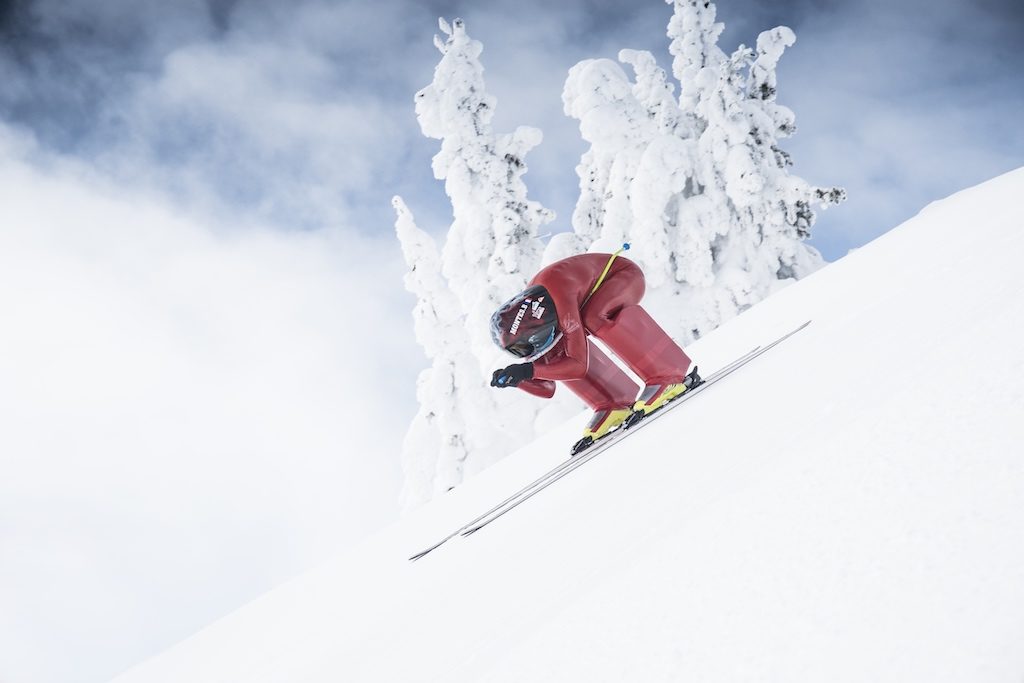
When Bastien talks of the Chabrieres track here in Vars it’s not difficult to infer his impression of something that’s more than just a sports venue. It’s a stop-off on the World Cup circuit, sure, one of eleven stages, but such are the characteristics of this near-sheer slope that it has been elevated to the status of speed skiing eminence, a supreme track where everything takes the superlative form. Most of its extremes can be gleaned simply by standing at the bottom and looking up, but what of the specifics from the viewpoint of a speed skier?
“Ninety-eight percent slope,” Bastien says, and my eyebrows lift. “1.4 km of track swallowed in less than twenty seconds. We go from 0 to 200 km/h in less than six seconds, this is an acceleration higher than Formula 1. It’s a whole slice of mountain that is exploited. It’s the track! Moreover, the one that I grew up on, the one that gave me my first records, the one of my greatest victories, the one I hope for my next world record. In World Cup, many tracks are shorter, less sloping, and therefore slower. Only four tracks in the world currently allow us to exceed 200 km/h.”
As a recreational skier I can only just comprehend the level of focus required to compete at Bastien’s sport. I once pointed my skis down the steepest slop I could find and managed to hit 120 km/h (75 mph) but I’ll be honest with you – it scared the life out of me. Hitting a velocity more than double that…How do you prepare your mind and body for it?
“Speed skiing is an extreme sport of precision. Many hours of preparation are needed for just twenty seconds of a crazy race. A race day always begins with an update with the technicians who take care of our skis. They are real goldsmiths. The ski is chosen according to the conditions of the moment and the sensations of the pilot. A debriefing is done in the early morning to choose together the final “secret potions” that will be used for the day. He has already spent eight hours preparing your skis during the night…
“Then muscular awakening is needed – a mixture of yoga positions and dynamic activation to numb the body. A breakfast to refuel, and start a preparation of more than two hours with the help of an outside person to don the equipment and perfect its aerodynamics.
“Finally it is the arrival on the track and the first marks of lines, holes, bumps – each centimetre is scrutinized. Taking snow temperatures, then this is the beginning of a long period of concentration; apprehension is inevitably present at the start of such an extreme race but we must learn to use it positively, to exploit it for to be stronger and not to fall into fear. Skiers regularly refuse the start of races at high speeds, paralyzed by the stake, by the risks, scars of old falls etched forever on our bodies.”
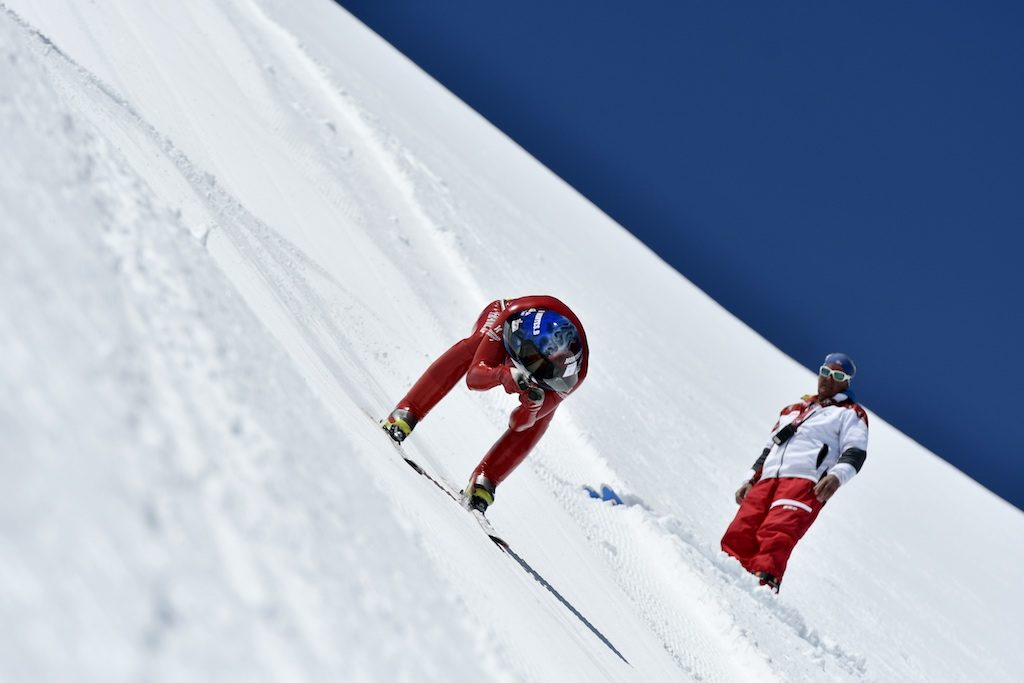
I swallow, and while I’m wondering if it’s something I’ll ever steel myself to try (because here in Vars the regular skiing public are allowed to have a go, albeit from a much lower starting position), Bastien adds casually, “The rest of the day is filled with happiness, intense feelings, sharing.”
Oh that’s fine then.
The thing is, as daunting as those speeds might be for most of us, top athletes generally drift into their metier from other sports. There’s no sudden urge to throw yourself off a mountain. Like women’s world record holder Valentina Greggio, Bastien has been skiing in some form or other almost since he could walk.
“I started skiing at the age of two, at the same time I was a top athlete in gymnastics until I was fourteen, and of course freestyler and freerider for the brand Quiksilver since I was eight years old. I have always practiced skiing on the Super G and the downhill but my dreams were more extreme, more about freedom.
“In 1992 my father was coach of the French team at the Albertville Olympic Games, and I discovered from inside the discipline that is speed skiing. My sponsors, Quiksilver decided to create a challenge for 6-16 years, allowing the youngest to reach 70 km/h and the largest 170! The virus was taken: I never left my profiled helmet and my long skis, in parallel with some freeride shooting sessions for the brand.”
As I’m wrestling with the concept of a skier who not only slides at double the national speed limit for cars, but jumps and flips as well, I can’t help but wonder how he might respond when asked about his proudest moment. There have been, after all, so many highlights in a still-flourishing career; medals, trophies, records – all notched up with something close to inevitability over the years. As it turns out though, Bastien’s treasured memory as a speed skier has a note that’s touched with sentimentality, a gesture towards his father who passed away in 2014.
“To have shone my father’s eyes when he was still at my side, my first world medal in the overall category, in 2007 in Verbier, Switzerland. A crazy race, an incredible result, almost unexpected, that he could only have imagined in his wildest dreams.”
Despite first imrpessions it’s not true that Bastien’s life has been one uninterrupted train of success. Yes, he’s found success when it mattered most – why else the persistence of that memory in Verbier from a decade ago? But scroll down the images on his website and you’ll see a career beset with injuries – of hospital beds and of knees strapped and criss-crossed with tape. What it comes down to is how, as a performer, those setbacks are faced.
“Never let go,” is Bastien’s advice. “All high-level athletes know at one time or another the failure, the injury, the bad self-esteem, the wish to give up. But it is in these moments that the greatest victories are built. By searching deep inside of previously unknown resources, [you find] the engine of future great things. It is these bouncing athletes who become the most formidable.”
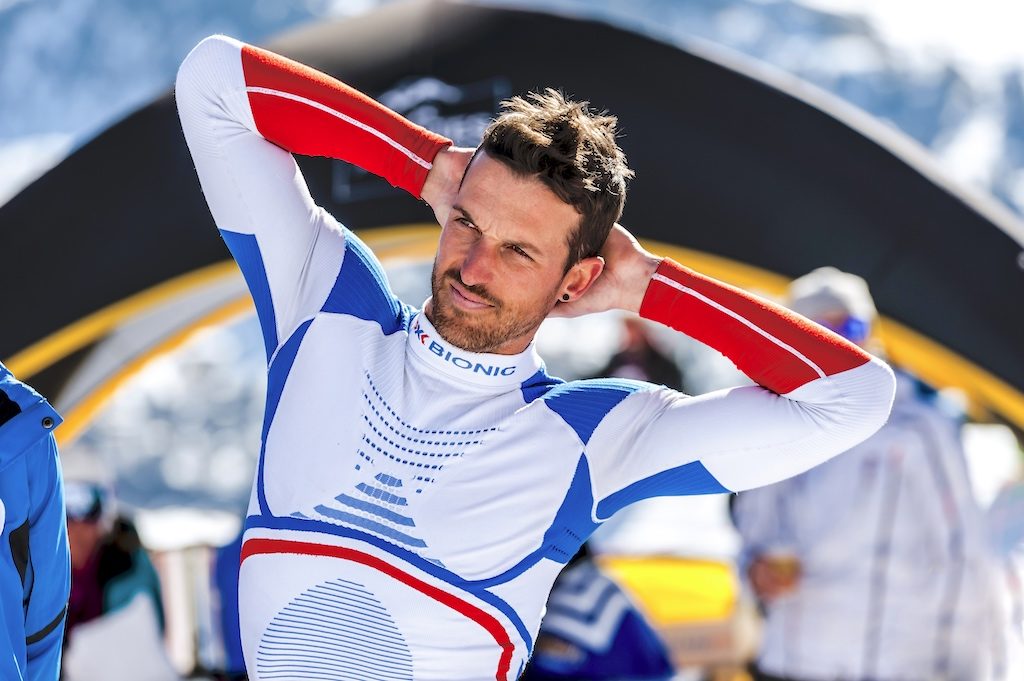
My grateful thanks to Bastien for finding some time in his hectic schedule to talk to me. You can find out more about this year’s fastest man in the world at the following:
Website: www.bastienmontes.com
Facebook: /bastmontes
Twitter: @bast_montes
Instagram: @bast_montes

